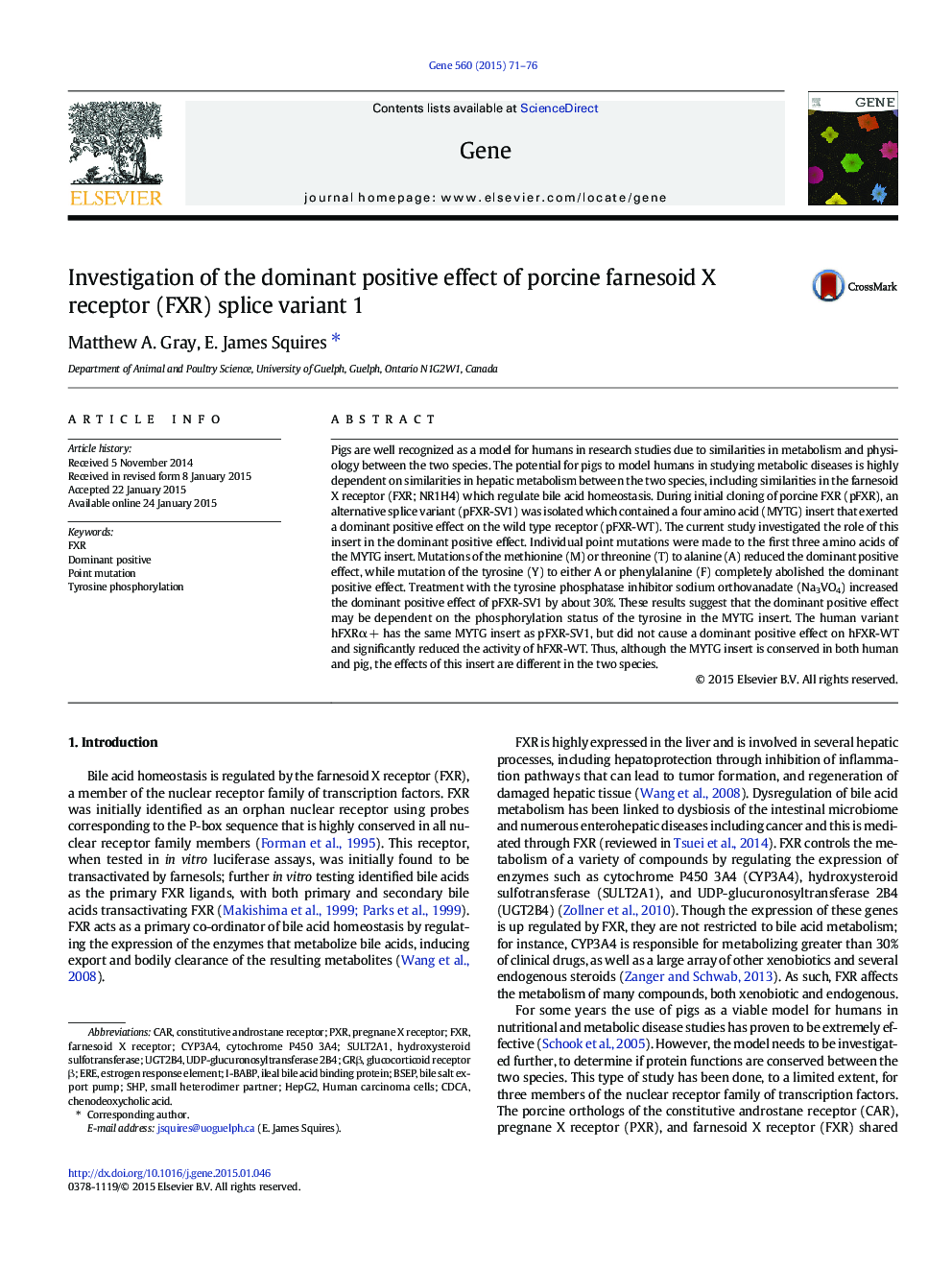| Article ID | Journal | Published Year | Pages | File Type |
|---|---|---|---|---|
| 5905490 | Gene | 2015 | 6 Pages |
Abstract
Pigs are well recognized as a model for humans in research studies due to similarities in metabolism and physiology between the two species. The potential for pigs to model humans in studying metabolic diseases is highly dependent on similarities in hepatic metabolism between the two species, including similarities in the farnesoid X receptor (FXR; NR1H4) which regulate bile acid homeostasis. During initial cloning of porcine FXR (pFXR), an alternative splice variant (pFXR-SV1) was isolated which contained a four amino acid (MYTG) insert that exerted a dominant positive effect on the wild type receptor (pFXR-WT). The current study investigated the role of this insert in the dominant positive effect. Individual point mutations were made to the first three amino acids of the MYTG insert. Mutations of the methionine (M) or threonine (T) to alanine (A) reduced the dominant positive effect, while mutation of the tyrosine (Y) to either A or phenylalanine (F) completely abolished the dominant positive effect. Treatment with the tyrosine phosphatase inhibitor sodium orthovanadate (Na3VO4) increased the dominant positive effect of pFXR-SV1 by about 30%. These results suggest that the dominant positive effect may be dependent on the phosphorylation status of the tyrosine in the MYTG insert. The human variant hFXRα + has the same MYTG insert as pFXR-SV1, but did not cause a dominant positive effect on hFXR-WT and significantly reduced the activity of hFXR-WT. Thus, although the MYTG insert is conserved in both human and pig, the effects of this insert are different in the two species.
Keywords
HepG2glucocorticoid receptor βI-BABPSULT2A1UGT2B4GrβPXRFXRBSEPCYP3A4SHPCDCAEREfarnesoid X receptorPoint mutationHuman carcinoma cellscytochrome P450 3A4small heterodimer partnerestrogen response elementTyrosine phosphorylationCARHydroxysteroid sulfotransferaseileal bile acid binding proteinBile salt export pumpconstitutive androstane receptorPregnane X receptor
Related Topics
Life Sciences
Biochemistry, Genetics and Molecular Biology
Genetics
Authors
Matthew A. Gray, E. James Squires,
